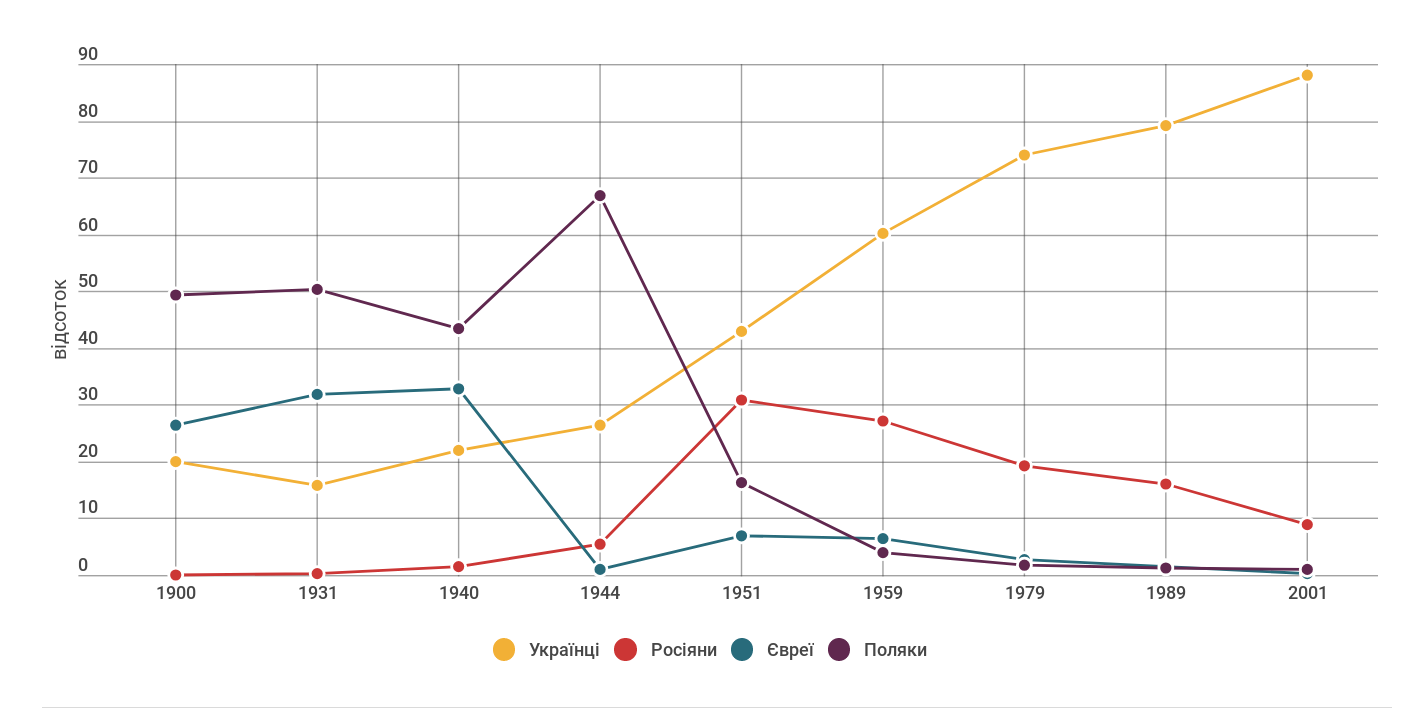The Epilogue of the War
Places
The lost home: post-war forced relocations: Polish Evacuation Committee building
Show full description
After the Catastrophe: the post-war life of the Jewish community in Lviv
Show full descriptionSources
1. Галина Боднар
"Розкіш і злидні повоєнного Львова, або реалії житлово-побутового повсякдення
в омріяному місті", Україна Модерна (accessed on 13.02.2019)
2. Роман Лозинський, Етнічний склад населення Львова (у контексті
суспільного розвитку Галичини). — Львів, 2005
3. Софія Дяк, "Творення образу
Львова як регіонального центру Західної України: радянський проект та його
урбаністичне втілення", Схід-Захід:Історико-культурологічний
збірник. Випуск 9-10,
Харків, 2008.
4. Степан Макарчук,
"Переселення поляків із західних областей України в Польщу у 1944-1946
рр.", Український історичний журнал,
2003 - сс. 104-115
5. Тімоті Снайдер, Перетворення націй. Польща, Україна, Литва,
Білорусь 1569–1999. Київ,
2012
6. Catherine Gousseff. Échanger les peuples: Le déplacement des minorités aux confins
polono-soviétiques, 1944-1947. Fayard, 2015
7. Damian Karol Markowski, Anatomia strachu. Sowietyzacja obwodu lwowskiego 1944–1953. Studium
zmian polityczno-gospodarczych, Warszawa, 2018
8. Grzegorz Hryciuk, Przemiany
narodowościowe i ludnościowe w Galicji Wschodniej i na Wołyniu w latach
1931–1948. Toruń, 2005
9. Jessica Reinisch, Elisabeth White. (eds.) The Disentanglement of Populations
Migration, Expulsion and Displacement in postwar Europe, 1944-49., Palgrave
Macmillan, 2011
10. Istvan Deák, Europe on Trial. The Story of Collaboration,
Resistance and Retribution during World War II, Boulder, 2015
11. Maciej Matwijów, Walka o lwowskie dobra kultury w latach
1945‒1948, Wrocław: Towarzystwo Przyjaciół Ossolineum, 1996
12. Serhii Plokhy, Yalta: The Price of Peace, NY, 2010
13. Tarik Cyril Amar, The Paradox of Ukrainian Lviv: A Borderland
City between Stalinists, Nazis, and Nationalists, Cornell University Press,
2015
14. Theodore Weeks,
"Population Politics in Vilnius 1944-1947: A Case Study of Socialist-Sponsored Ethnic Cleansing", Post-Soviet
Affairs, 23(1), 2007, pp. 76-95
Cover photo: Information stand with a current map of hostilities near the Videnska cafe, 1945. Source: Urban Media Archive, Center for Urban History, Volodymyr Rumyantsev’s collection.
Translated by Adnriy Masliukh









